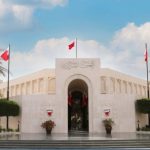India’s foreign exchange reserves have once again reached a new lifetime high, with the reserves touching $657.155 billion in the week that ended on July 5. This marks a $5.158 billion increase from the previous high of $655.817 billion reached last month. The reserves have been steadily rising throughout 2024, with a cumulative increase of about $35 billion so far. The latest data from the Reserve Bank of India (RBI) shows that India’s foreign currency assets (FCA) rose by $4.228 billion to $577.110 billion, while gold reserves increased by $904 million to $57.432 billion.
According to a recent RBI report, India’s foreign exchange reserves are now sufficient to cover over 11 months of projected imports. In 2023, the RBI added around $58 billion to its foreign exchange reserves. However, in 2022, India’s forex reserves experienced a cumulative decline of $71 billion. Foreign exchange reserves are assets held by a nation’s central bank or monetary authority, typically in reserve currencies such as the US Dollar, Euro, Japanese Yen, and Pound Sterling. The relative fall in India’s forex reserves after reaching an all-time high in October 2021 can be attributed to a rise in the cost of imported goods.
The decline in forex reserves could also be linked to the RBI’s intervention in the market to prevent the excessive depreciation of the rupee against the US dollar. The RBI intervenes in the market through liquidity management, including the sale of dollars, to maintain orderly market conditions and prevent steep depreciation of the rupee. The central bank closely monitors the foreign exchange markets and intervenes as needed to contain excessive volatility in the exchange rate, without a predetermined target level or band. The rise in India’s foreign exchange reserves reflects the country’s efforts to strengthen its financial stability and enhance its ability to manage external shocks.
With India’s foreign exchange reserves continuing to rise to new highs, the country is in a strong position to meet its external obligations and maintain stability in the currency markets. The RBI’s proactive approach to managing the forex reserves has played a crucial role in stabilizing the rupee and ensuring smooth functioning of the foreign exchange markets. As the global economic landscape remains uncertain, having robust foreign exchange reserves is essential for India to navigate any potential challenges and maintain confidence in its economy. India’s growing forex reserves are a testament to its strong economic fundamentals and prudent financial management, positioning the country well for future growth and stability.











